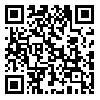BibTeX | RIS | EndNote | Medlars | ProCite | Reference Manager | RefWorks
Send citation to:
URL: http://rehabilitationj.uswr.ac.ir/article-1-1371-en.html
Objective: The aim of this study was the comparison of traditional exercises & body weight supported training (BWST) exercises on sensory-motor function, quality and quantity of walking in paraplegic spinal cord injured persons.
Materials & Methods: 17 voluntary paraplegic spinal cord injured persons (Asia B,C), age 32.53±1.793 years, height 175.71±1.658 cm, weight 71.59±2.442 kg, and body mass index (BMI) 23.18 ± 0.828 kg/m2 availability. The subjects were randomly assigned to BWSTT group (N=10) and Traditional exercises group (N=7) according to sensory and motor score. The subjects trained for 12 weeks, four times per week and 60 min per session. BWSTT include 15 min warm-up on fixed gear bike, 45 min BWSTT with 50% body weight and 10 min cold-down finally. 10% load was added each week. Traditional exercises included 15 min warm-up plus 45 min stretch exercise and resistance training.
Results: The data showed that there were significant differences in changes of sensory function Pin score (P=0.002) and Light Score (P=0.002) sensory function, motor function (P=0.000), Walking index Spinal cord injury (WISCI) (P=0.002), 6 min walking test (P=0.001) and 10 meter walking (P=0.001) between BWSTT and traditional exercise.
Conclusion: BWSTT in comparison with traditional exercise can improve sensory-motor function and quality and quantity of walking in paraplegic spinal cord injured persons.
Received: 4/10/2013 | Accepted: 17/06/2014 | Published: 22/12/2014
| Rights and permissions | |
 |
This work is licensed under a Creative Commons Attribution-NonCommercial 4.0 International License. |





